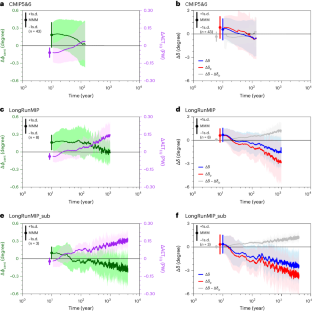2024-07-03 ミュンヘン大学(LMU)

Svalbard’s climate is warming seven times faster than the rest of the world, causing its glaciers to rapidly retreat.
© James A. Bradley
地球の陸地の約10%は氷河に覆われていますが、地球温暖化により氷河は急速に後退しています。氷河の後退によって、長期間氷に覆われていた新しい土地が露出し、そこに微生物が定着し、栄養を蓄積して新しい土壌や生態系が形成されます。これにより、土壌が炭素を蓄える能力が重要になります。
◆リュードビヒ・マクシミリアン大学(LMU)のウィリアム・オルシ教授の研究チームは、氷河が後退した地域の土壌で微生物の活動を調査しました。研究では、菌類が炭素を土壌に固定する役割が特に重要であることが明らかになりました。菌類は、若い土壌において炭素の安定化に大きく貢献し、これにより将来的な炭素の蓄積に重要な役割を果たすことが示されました。
◆この研究結果は、「氷河の後退が進むと、菌類が北極圏の土壌における炭素の主要な蓄積者となる」ことを示しています。
<関連情報>
- https://www.lmu.de/en/newsroom/news-overview/news/retreating-glaciers-fungi-enhance-carbon-storage-in-young-arctic-soils.html
- https://www.pnas.org/doi/10.1073/pnas.2402689121
高緯度北極圏における土壌形成初期の炭素安定化における菌類の主な役割 Principal role of fungi in soil carbon stabilization during early pedogenesis in the high Arctic
Juan Carlos Trejos-Espeleta, Juan P. Marin-Jaramillo, Steven K. Schmidt, +2, and William D. Orsi
Proceedings of the National Academy of Sciences Published:July 2, 2024
DOI:https://doi.org/10.1073/pnas.2402689121
Significance
Glaciers cover approximately 10% of land on Earth and are in rapid decline due to climate warming. As glaciers melt and retreat, they expose new bedrock and terrain that over time transforms into soil. Microbes are responsible for controlling how much carbon is stored in the newly developed soils, but how microbial activity promotes carbon storage under these conditions is poorly understood. We report that fungi in a high-Arctic glacial ecosystem drive carbon stabilization in soils within decades after glacier retreat. The pioneer fungi taxa most important for promoting carbon storage were black yeasts. Our results show that fungi will play a critical role in future Arctic soil carbon storage, as glaciers continue to shrink and expose more terrain.
Abstract
Climate warming is causing widespread deglaciation and pioneer soil formation over glacial deposits. Melting glaciers expose rocky terrain and glacial till sediment that is relatively low in biomass, oligotrophic, and depleted in nutrients. Following initial colonization by microorganisms, glacial till sediments accumulate organic carbon and nutrients over time. However, the mechanisms driving soil nutrient stabilization during early pedogenesis after glacial retreat remain unclear. Here, we traced amino acid uptake by microorganisms in recently deglaciated high-Arctic soils and show that fungi play a critical role in the initial stabilization of the assimilated carbon. Pioneer basidiomycete yeasts were among the predominant taxa responsible for carbon assimilation, which were associated with overall high amino acid use efficiency and reduced respiration. In intermediate- and late-stage soils, lichenized ascomycete fungi were prevalent, but bacteria increasingly dominated amino acid assimilation, with substantially decreased fungal:bacterial amino acid assimilation ratios and increased respiration. Together, these findings demonstrate that fungi are important drivers of pedogenesis in high-Arctic ecosystems that are currently subject to widespread deglaciation from global warming.



